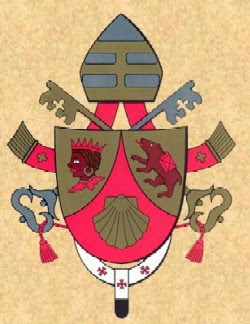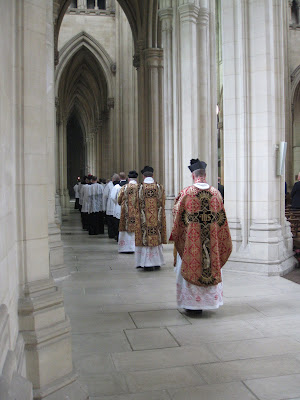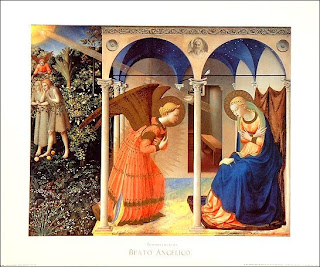
LONDON, AUG. 23, 2010 (Zenit.org).- England, the destination of Benedict XVI's Sept. 16-19 trip, is the geopolitical epicenter of the culture of death, says Edmund Adamus, but it is also the "Dowry of Mary."
Adamus, director of Pastoral Affairs for the Diocese of Westminster, explained to ZENIT how England's unique Christian heritage and its present vanguard anti-Catholic culture make it a highly significant place for the Pope's upcoming visit. .....
In this interview with ZENIT, Adamus spoke about the state of the Church and marriages in the United Kingdom, the hopes of local Catholics for the Papal visit, and the role of England in evangelizing the greater global culture. ......
ZENIT: Could you say something about what you are hoping for as a result of the Papal visit?
Adamus: I personally hope for a fresh sense of purpose and clarity about what we as Catholics understand in terms of mission, for the authentic dignity of the person.
I hope that this real, very real and personal love of Christ for each member of British society is somehow manifested in a better understanding in the wider public's perception of who the Church is (as the Mystical Body of Christ) rather than what it is politically (as a hierarchical institution).
The late Archbishop Fulton Sheen used to say that there are not more than 200 people in the whole nation who really hate the Catholic Church, but there are millions who hate what they think the Catholic Church teaches.
I pray that Pope Benedict's visit will do something miraculously significant to address this level of false perception.
ZENIT: What role do you see England playing in the more global scene of evangelizing the culture?
Adamus: The media focus on the Pope, his message and the Catholic Church becomes frenetic for the people of a nation where he visits. Great Britain is no different, but there is a certain frisson about the nature of the attention the visit will generate in the media here and in the public consciousness.
Why? Because whether we like it or not as British citizens and residents of this country -- and whether we are even prepared as Catholics to accept this reality and all it implies -- the fact is that historically, and continuing right now, Britain, and in particular London, has been and is the geopolitical epicenter of the culture of death.
Our laws and lawmakers for over 50 years or more have been the most permissively anti-life and progressively anti-family and marriage, in essence one of the most anti-Catholic landscapes culturally speaking than even those places where Catholics suffer open persecution.
England itself nevertheless has a unique Christian heritage: St. Augustine, the apostle to the English appointed by Pope Gregory, defied the temptation to despair of ever converting the pagan Britons by reminding the degenerate race of the beauty, truth and dignity of marriage.
St. Bede's chronicle of English Christianity recounts this strategy, and, as he put it, "England recovered."
England is also the "Dowry of Mary," an ancient title going back to the 14th century and even further in the spiritual language of the people.
This title signified the fact that from the earliest times English Catholic Christians revered the person of the Mother of Christ with such a singular and wholehearted devotion that the very nation itself was attributed with having a supernatural role (metaphorically-speaking) in the "marriage" between the Holy Spirit and his spouse -- the Virgin of Nazareth.
That is to say, English Christianity, in the plan of God, has a unique role to play in being a secure foundation (like a dowry in a marriage) to the work of redemption and salvation history globally.
England was the first Christian nation to bestow upon the Church the formal solemnizing of marriages, which found expression in the Sarum Rite of Marriage.
Here in this ancient rite the words "and with my body I thee worship" (still used by our Anglican brethren) became, if you like, in medieval times onwards the primordial theology of the body.
For if spouses are called by God to honor one another bodily, then it is certain that our utmost respect for the presence of the divine in the physicality of all of us is beyond question, since all of us by virtue of baptism are as men married to the Church and as women wedded to Christ the Bridegroom.
Above the main door of Westminster Catholic Cathedral of the Most Precious Blood, there is a mosaic dedicated to the triumphant reigning Christ. He is flanked by his mother and foster father, Mary and Joseph, who in turn are next to St. Peter and St. Edward the Confessor.
Peter and Edward kneel before this scene. Both of them in their symbolic roles: one as visible head of the Church, the other as king, who personifies the realm of England. They kneel before the triptych of the Holy Family.
I pray that the Papal visit will inspire all here, both Church and state, to interiorly kneel before that inestimable icon of the Trinity: marriage and the family...
The full version of this article, by Genevieve Pollock, may be found at:
http://www.zenit.org/article-30134?l=english















